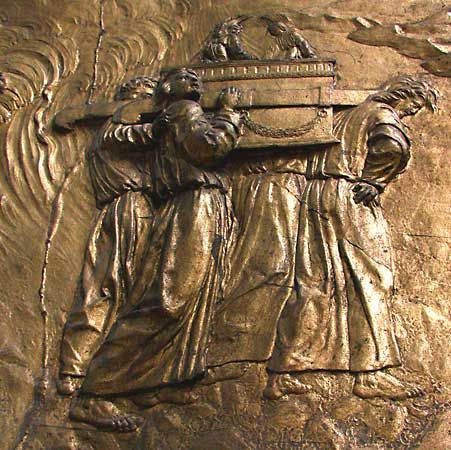Physical Address
304 North Cardinal St.
Dorchester Center, MA 02124
Physical Address
304 North Cardinal St.
Dorchester Center, MA 02124

Contents
The Ark of the Covenant, a revered relic in Judaism and Christianity, has captivated the imagination of believers and historians alike for centuries. This ornate, gold-plated wooden chest is said to have housed the two tablets of the Law given to Moses by God. Let’s delve into the historical significance, the enigmatic journey, and the ultimate fate of this sacred artifact.
According to biblical accounts, the Ark played a pivotal role in the lives of the Israelites. It resided in the Holy of Holies inside the Tabernacle of the ancient Temple of Jerusalem and was only seen by the high priest on Yom Kippur, the Day of Atonement. The Levites carried the Ark during the Hebrews’ wanderings in the wilderness and into battles after the conquest of Canaan. King David brought it to Jerusalem, and King Solomon eventually placed it in the Temple.
Throughout its history, the Ark symbolized the presence of God among His people and was a tangible representation of His covenant with the Israelites. Its significance extended beyond religious rituals, as it was believed to bring divine protection and guidance to the faithful.
The Ark of the Covenant was considered so sacred that only the high priest of the Israelites was allowed to touch it, and that too only under specific circumstances. The biblical account recounts severe consequences for those who dared to touch the Ark without authorization, emphasizing the reverence and fear associated with this revered artifact.
The strict regulations regarding the handling of the Ark underscored its sanctity and the belief that it housed the very presence of God. This aura of holiness surrounding the Ark added to its mystique and solidified its status as the most sacred relic of the Israelites.
The final fate of the Ark of the Covenant remains shrouded in mystery. While historical records and biblical texts provide accounts of its movements and placements, the ultimate whereabouts of the Ark are unknown. Speculations range from its capture by enemies to its hidden preservation by faithful custodians.
Various theories and interpretations regarding the fate of the Ark continue to intrigue scholars and enthusiasts, with some suggesting that it was taken to Babylon during the conquest of Jerusalem, while others propose clandestine concealment to safeguard it from desecration. The enigma surrounding the Ark’s disappearance adds to its allure and sparks ongoing debates among researchers.
As of 2024, the Ark of the Covenant stands as a symbol of faith, covenant, and divine presence in the collective consciousness of believers. Its historical role, the restrictions on its handling, and the mysteries surrounding its fate contribute to its enduring legacy as a revered artifact in religious narratives.
The legacy of the Ark of the Covenant transcends its physical form, embodying the spiritual connection between God and His people. The reverence and awe inspired by the Ark underscore the profound significance of faith and the enduring power of sacred relics in religious traditions.
Despite the uncertainties surrounding its current location, the Ark’s legacy endures through ancient texts, archaeological findings, and theological interpretations. Its symbolic importance as a vessel of divine communication and covenant remains a cornerstone of religious discourse and historical inquiry.
The enigmatic nature of the Ark of the Covenant continues to captivate scholars, archaeologists, and believers alike. The quest to unravel its mysteries, trace its journey through history, and decipher its ultimate fate fuels ongoing research and speculation in academic circles.
As new discoveries shed light on ancient practices and beliefs, the legacy of the Ark persists as a testament to the enduring quest for spiritual connection and the profound mysteries that lie at the intersection of faith and history.